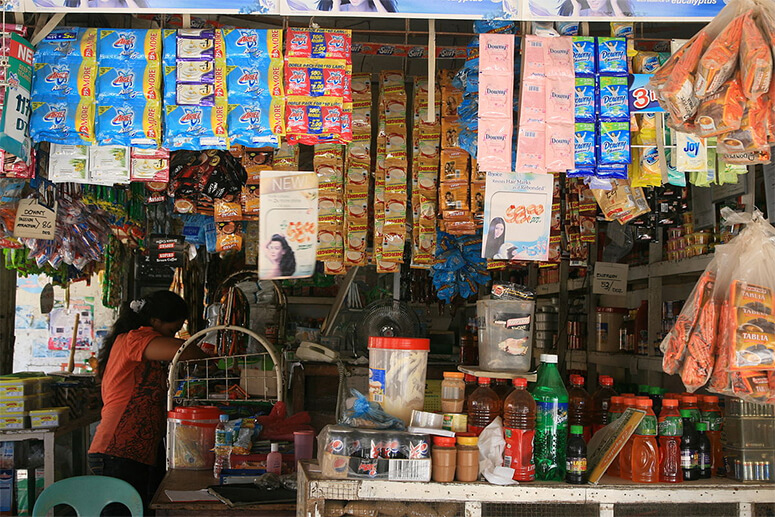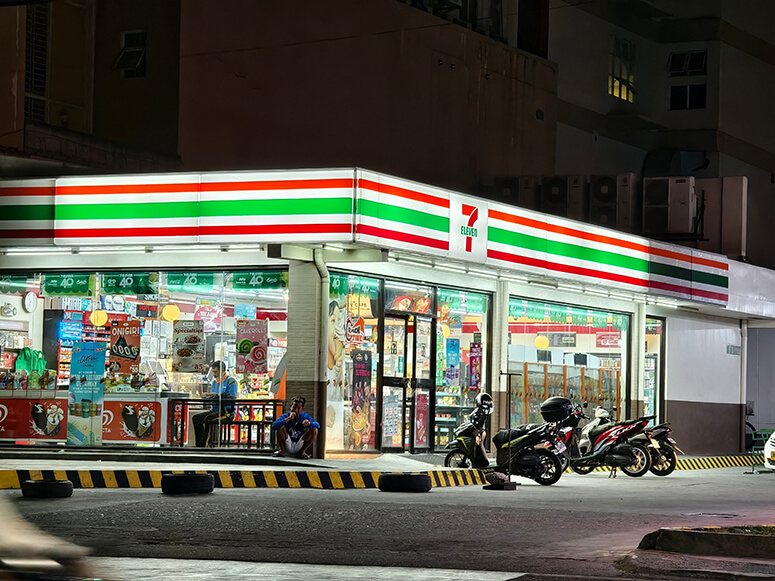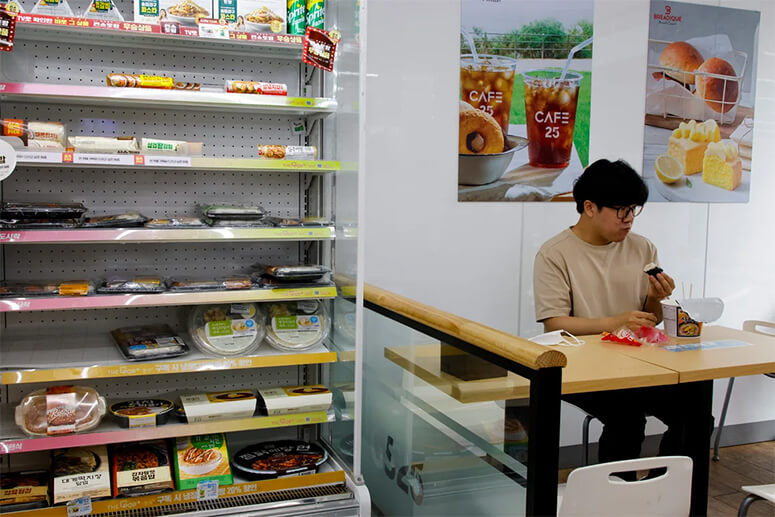Convenience store truths
Our kasambahay once walked 15 minutes to the nearest supermarket just to buy Yakult. The village store had it, but at a predictably higher price. She came home soaking wet from the rain, yet glowing with warmth as she clutched that prized pack of probiotic goodness like it was a marathon finisher medal.
This scene brought me back to my childhood in Tondo, Manila, where sari-sari stores were practically part of the scenery. They were on street corners, literal holes in walls, front yards, carports, and sidewalks—all offering the same goods to the same neighbors at the same price, a 21st-century nod to Adam Smith’s “invisible hand.”
I had an enterprising friend who set up a cardboard stall under the stairs of a pedestrian overpass; he was the boy who lived—from selling candies, newspapers, cigarettes, and whatnot.

For my part, I occasionally manned a store that catered to players at our makeshift basketball court in the middle of the road. To paraphrase Doc Emmett Brown, “Road? Where we’re playing, we don‘t need roads.” But everyone needed the benches at Aling Mercy’s sari-sari store, as long as they bought something. Anything.
The popularity of a sari-sari store, then and now, depends on the diversity of its products. Business will generally be good as long as the store has sweet and salty snacks; canned fish and meat; instant noodles and other instant whatever; detergents, soaps, shampoos, and feminine care; condiments, flavored mixes and bouillons, and spreads; rice and dried noodles; matches and candles (for those summer power outages); ice water, ice cream, ice candy, and ice-cold Yakult; cigarettes and liquor (available even to minors, thank you); in recent times, mobile phone load and GCash transfers.
And if there is a suking tindahan (go-to store), then there are suki (regulars) who can earn a credit line based solely on loyalty points and community trust. It‘s a bond rooted in those bygone days when a person’s word actually meant something.
The sari-sari store has been around since Spanish colonial times. These small, informal retail outlets emerged in residential neighborhoods as a hyper-local solution to the problem of trekking long distances to the plaza or town center for a bag of pan de sal. They reflect the Filipino tingi or piecemeal culture, our tendency to buy just one egg, a cup of sugar, a sachet of three-in-one coffee, or a stick of cigarette. No minimum purchase required, no judgment, and today, digital wallets accepted.
Though their merchandise and signage may have evolved, they’ve retained their cherished role as social hubs for gossip, tambayan (hanging out), and spontaneous barangay meetings—like barbershops, but with snacks instead of scissors.
Then came the rise of the konbini (cue the Voltes V intro) or what some now cheekily call the “sosy (or upscale) sari-sari store.” 7-Eleven, the largest global convenience store chain, may have been born in Dallas, Texas, but it became a tsunami of retail shopping ease when Tokyo-based Seven & I Holdings Co. took over in 1991. Just like tempura and the super robots, 7-Eleven has carved out a solid niche in Philippine society, alongside newer players like Lawson and Family Mart.

It makes perfect sense that National 7-Eleven Day, celebrated every July 11 in the US, has become a global retail event, complete with irresistible deals and promos. I’m not sure how it’s observed in the Philippines, but I’d be perfectly content with a free cup of mochaccino, which pairs well with their microwavable “gourmet” meals.
In Japan, however, the konbini is sacred. While tamago sandwiches, fresh ramen, and matcha drinks are must-haves, you can also score essentials beyond food and beverage at nearly every outlet in Tokyo or Osaka: earbuds and adaptors, travel kits, condoms, cigarettes, OTC meds, pain relief patches, umbrellas, plush toys, and, of course, manga and anime books.
Whether born from necessity or nurtured by culture, these stores have become more than mere retail spaces. They’re part of our daily rituals and emotional landscapes, fast and easy, while echoing a shared human need for both sustenance and connection.
Most feature ATMs that offer fair foreign exchange rates. You can also pay bills, scan and print documents and photos, pick up Amazon packages, buy concert tickets, and even ship parcels via TA-Q-BIN. There’s a well-worn saying, “You can live your whole life out of a konbini.” For some, that’s not an exaggeration.
Literature and pop culture mirror this reverence. Sayaka Murata’s award-winning novel Convenience Store Woman follows a woman whose identity is anchored in her part-time job at a konbini. Haruki Murakami may have found inspiration for his stories somewhere between the onigiri section and the hot oden counter.

Convenience stores also play a crucial role in modern Korean society, where the pyeonuijeom doubles as an emotional lifeline. K-dramas have elevated them to spaces of healing, romance, nostalgia, and introspection. In the 2020 series Backstreet Rookie—based on the webtoon She’s Too Much for Me, whose Korean title literally translates to Convenience store Saetbyeol—the store becomes a stage for late-night dreams, longing, and flirting disguised as romantic banter.
I’ve heard a few Koreans say that no matter where you are in Korea, a convenience store is just five minutes away, and that’s five minutes to survival. With nearly 50,000 outlets in Seoul alone by the end of 2024—dominated by CU, GS, and 7-Eleven—it’s easy to believe. They’re attractive, well-lit, omnipresent, and well-stocked glades in the concrete jungle. And for a few thousand won, you can enjoy a satisfying meal of hot ramyeon or jjajangmyeon, uiseong garlic sausage and gimbap (sometimes sold as one), banana milk or soju as chaser, and a World Cone or Melona for dessert. Just thinking about it makes me salivate.
Whether born from necessity or nurtured by culture, these stores have become more than mere retail spaces. They’re part of our daily rituals and emotional landscapes, fast and easy, while echoing a shared human need for both sustenance and connection.
From Dallas to Manila, Tokyo, and Seoul, convenience stores are here to stay for as long as they have patrons—and they are legion—who have created a subculture around these havens of simple pleasure, comfort, and occasional life epiphanies.


